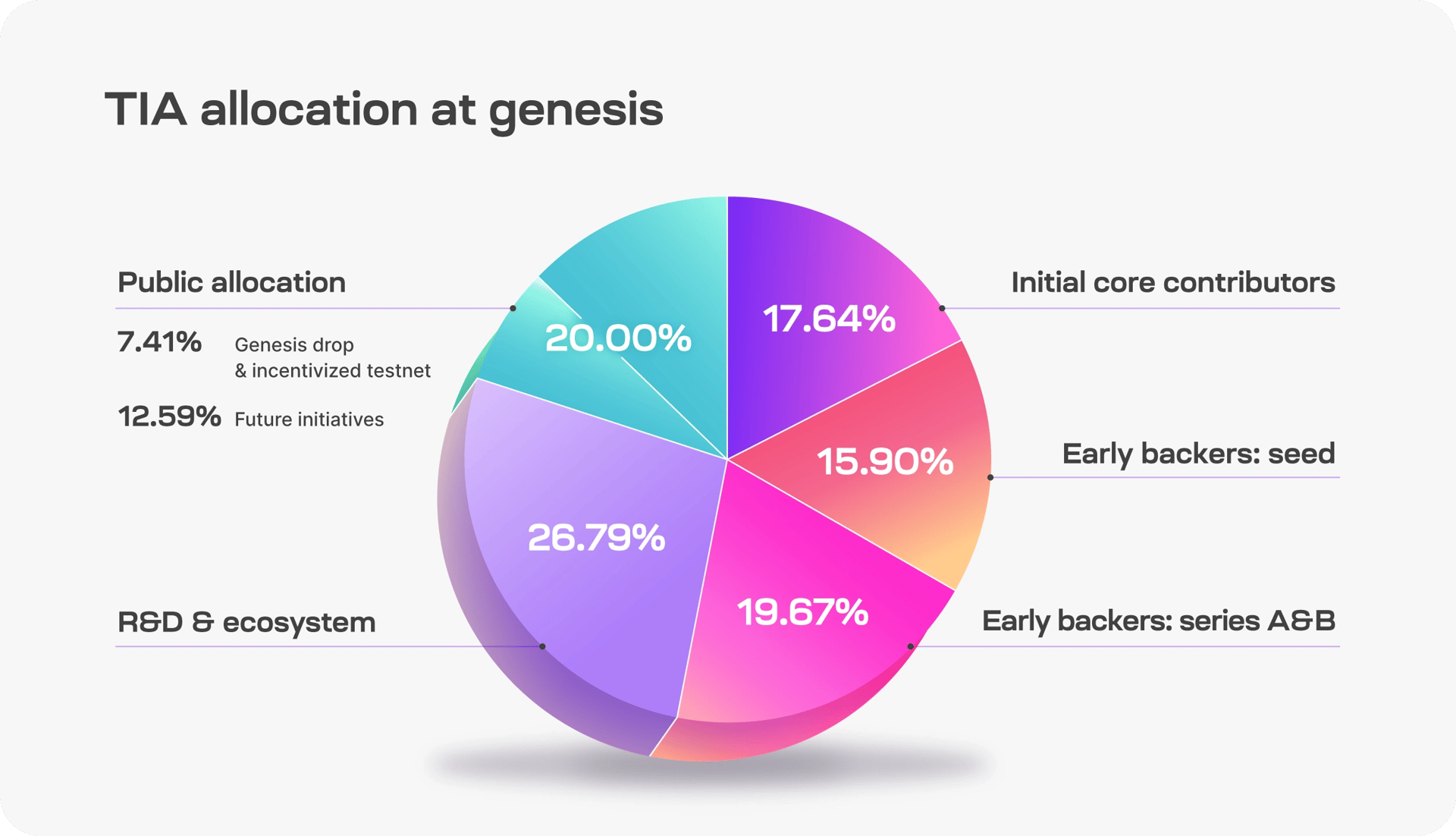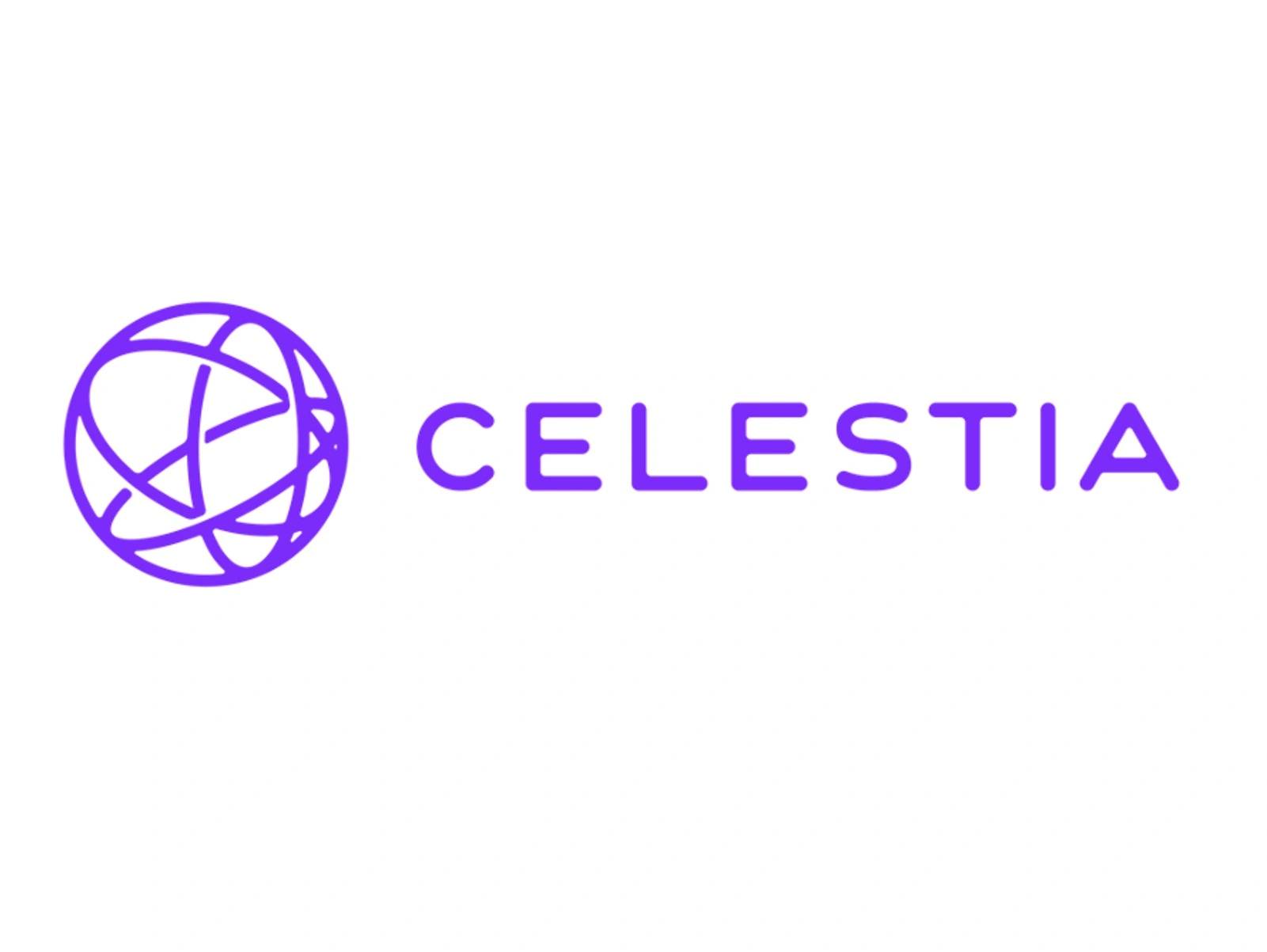위키 구독하기
Share wiki
Bookmark
Celestia
Celestia
Celestia(셀레스티아)는 증가하는 사용자와 안전하게 확장되도록 설계된 모듈식 데이터 가용성 네트워크로, 개인화된 블록체인의 손쉬운 배포를 가능하게 합니다. 이는 실행과 합의를 분리하고 데이터 가용성 샘플링이라는 새로운 요소를 도입함으로써, 특히 모듈식 블록체인을 포함한 확장 가능한 블록체인 아키텍처의 생성을 용이하게 합니다. Mustafa Al-Bassam(무스타파 알-바쌈)과 Ismail Khoffi(이스마일 코피)가 Celestia를 설립했습니다. [1] [2]
개요
셀레스티아(Celestia)는 확장성과 유연성을 향상시키기 위해 합의(consensus)(https://iq.wiki/wiki/consensus-mechanism)를 실행으로부터 분리하는 모듈형 데이터 가용성 네트워크입니다. 트랜잭션 순서를 정하고 데이터 가용성을 보장하는 데만 집중하여 다른 블록체인(blockchain)(https://iq.wiki/wiki/blockchain)이 독립적으로 실행을 처리할 수 있도록 합니다. 데이터 가용성 샘플링을 사용하여 셀레스티아는 경량 노드(nodes)(https://iq.wiki/wiki/node)가 작은 부분만 확인하여 데이터를 검증할 수 있도록 하여 리소스 요구 사항을 줄입니다. 더 많은 노드(nodes)(https://iq.wiki/wiki/node)가 참여하고 샘플링을 수행함에 따라 네트워크는 검증 비용을 증가시키지 않고 더 큰 블록(blocks)(https://iq.wiki/wiki/block)을 처리할 수 있으므로 모듈형 블록체인(blockchains)(https://iq.wiki/wiki/blockchain)의 성장을 지원합니다. [2] [11]
역사
셀레스티아(Celestia)는 무스타파 알-바쌈의 2019년 백서(LazyLedger)에서 시작되었습니다. 이 백서는 계산이나 실행을 처리하지 않고 데이터 가용성에만 집중하는 분산원장을 제안했습니다. 이 아이디어를 프로젝트로 발전시키기 위해 알-바쌈은 공동 창립자들과 팀을 구성했습니다. 여기에는 코스모스 생태계 개발자인 이스마일 코피와 낙관적 롤업 기술 경험이 풍부한 존 애들러(John Adler)가 포함됩니다. 이 프로젝트는 2021년에 셀레스티아로 브랜드를 변경했고, 메인넷은 2023년 10월 31일에 출시되었습니다.
출시 이후 셀레스티아는 베인 캐피탈 크립토(Bain Capital Crypto), 코인베이스 벤처스, 점프 크립토(Jump Crypto)와 같은 주요 암호화폐 회사들의 지원을 받았습니다. 셀레스티아의 네이티브 토큰인 TIA는 2023년 12월 중순까지 500% 상승하는 등 큰 성장세를 보였습니다. 폴리곤 랩스와 옵티미즘 랩스와 파트너십을 맺고 셀레스티아의 데이터 가용성 계층을 해당 롤업 솔루션에 통합했습니다. 2024년 2월에는 아비트럼 오비트 프로토콜에도 기여하여 개발자들이 아비트럼 AnyTrust와 함께 셀레스티아를 롤업 데이터 가용성에 사용할 수 있도록 했습니다. [12]
데이터 가용성 계층 (DA)
셀레스티아(Celestia)의 데이터 가용성(DA) 계층은 실행 및 결제 계층이 중앙화된 신뢰에 의존하지 않고 트랜잭션 데이터에 접근할 수 있는지 독립적으로 검증할 수 있도록 합니다. 이는 데이터 가용성을 실행으로부터 분리하는 모듈 방식을 도입하여 더욱 확장 가능한 블록체인 구조를 가능하게 합니다. 이는 두 가지 주요 기능을 통해 달성됩니다. 하나는 데이터 가용성 샘플링(DAS, Data Availability Sampling)으로, 라이트 노드가 전체 블록 대신 작은 데이터 샘플을 검사하여 데이터 가용성을 확인할 수 있도록 합니다. 다른 하나는 네임스페이스 머클 트리(NMT, Namespaced Merkle Trees)로, 애플리케이션이 자신과 관련된 세그먼트만 검색할 수 있도록 데이터를 네임스페이스로 구성합니다.
DA 계층은 코스모스 SDK로 구축된 celestia-app이라는 지분 증명 블록체인으로 작동합니다. 이는 텐더민트 합의 프로토콜의 사용자 정의 버전인 Celestia-core에서 실행됩니다. 수정 사항에는 2차원 리드-솔로몬(Reed-Solomon) 이레이저 코딩 및 NMT 지원이 포함되며, 선택적 데이터 접근을 가능하게 하기 위해 텐더민트의 기본 머클 트리를 대체합니다. Celestia-core는 블록체인 애플리케이션을 위한 업그레이드된 인터페이스인 ABCI++를 통해 애플리케이션 계층에 연결됩니다. Celestia 앱은 스테이킹 및 거버넌스를 관리하지만 블록 데이터를 처리하거나 저장하지 않습니다. 데이터와 무관한 역할을 유지하며 데이터 분산을 지원합니다. [4]
데이터 가용성 샘플링(DAS)
셀레스티아는 데이터 가용성 샘플링(DAS)을 사용하여 라이트 노드가 전체 데이터 세트를 다운로드하지 않고도 블록 데이터를 검증할 수 있도록 합니다. 이를 위해 셀레스티아는 2차원 리드-솔로몬 인코딩 방식을 적용합니다. 블록 데이터는 먼저 k×k 행렬의 청크로 나뉘고, 여러 인코딩 응용 프로그램을 통해 생성된 패리티 데이터를 사용하여 2k×2k 행렬로 확장됩니다. 각 행과 열에 대해 머클 루트(총 4k개)가 계산되며, 이러한 루트의 머클 루트는 헤더의 블록 데이터 커밋먼트가 됩니다. [4]
확장성
DAS는 자원이 제한적인 경량 노드가 블록 데이터의 일부만 샘플링할 수 있도록 함으로써 확장성을 향상시킵니다. 더 많은 경량 노드가 참여함에 따라 데이터를 다운로드하고 저장할 수 있는 총 용량이 증가합니다. 이러한 접근 방식을 통해 네트워크는 개별 노드에 과부하를 주지 않고 더 큰 블록을 지원할 수 있습니다. 그러나 Celestia 경량 노드는 여전히 블록 헤더를 검증하기 위해 4k 중간 Merkle 루트를 다운로드해야 합니다. 크기가 n²바이트인 블록 데이터의 경우 각 경량 노드는 O(n)바이트를 다운로드하며, 이는 경량 노드 대역폭의 향상이 데이터 가용성 계층의 처리량을 2차적으로 증가시킨다는 것을 의미합니다. [4]
잘못 확장된 데이터의 사기 증명
셀레스티아(Celestia)의 2차원 리드-솔로몬(Reed-Solomon) 부호화 사용은 표준 1차원 부호화에 비해 장점을 제공합니다. 표준 방식에서는 데이터를 k개의 청크로 분할하고 k개의 패리티 청크로 확장하며, 2k개의 청크에 대한 머클(Merkle) 루트 커밋먼트를 사용합니다. 이 방법은 검증 데이터 크기를 줄이지만, 블록 생성자가 잘못 확장된 데이터를 도입할 가능성이 더 높습니다. 이런 일이 발생하면, 충분한 고유 샘플을 수집하더라도 라이트 노드가 원본 데이터를 복구하지 못할 수 있습니다.
셀레스티아는 사기 증명을 사용하여 이러한 위험을 완화합니다. 사기 증명을 통해 라이트 노드는 부적절하게 확장된 데이터가 포함된 블록을 탐지하고 거부할 수 있습니다. 이러한 증명에는 인코딩된 데이터의 일부를 재구성하고 검증하는 작업이 포함됩니다. 표준 방식에서는 검증을 위해 전체 n² 바이트의 데이터를 다운로드해야 하지만, 2차원 방식에서는 행 또는 열 하나만 검증해도 불일치를 감지할 수 있으므로 O(n) 바이트만 필요합니다. [4]
네임스페이스 머클 트리(NMT)
네임스페이스 머클 트리(NMT)는 Celestia에서 애플리케이션 또는 네임스페이스별로 블록 데이터를 구성하는 데 사용됩니다. 롤업과 같은 각 애플리케이션에는 네임스페이스가 할당되어 관련 데이터만 다운로드하고 무관한 정보는 무시할 수 있습니다. NMT는 네임스페이스 식별자에 따라 리프를 정렬하고 각 노드에 자손의 네임스페이스 범위가 포함되도록 해시 함수를 변경하여 표준 머클 트리를 수정합니다. 이 구조를 통해 애플리케이션은 데이터의 포함 및 완전성을 확인할 수 있습니다. 특정 네임스페이스의 데이터를 요청할 때 DA 계층은 관련 데이터 공유 및 증명 노드를 제공해야 합니다. 데이터가 불완전한 경우 애플리케이션은 증명 노드의 네임스페이스 범위를 확인하여 이를 감지할 수 있습니다. [4]
Celestia 모듈러 미트업 프로그램
Celestia 모듈러 미트업 프로그램은 교육 및 지원을 제공하고 Web3 생태계 내의 협업을 증진함으로써 미트업 주최자를 지원하도록 설계되었습니다.
주최자는 샘플 워크숍, 장소 확보 안내 및 마케팅 지원을 포함한 지원을 받습니다. 또한 연사 목록에 접근하여 대면 또는 가상 미트업에서 Celestia Labs 및 모듈러 생태계의 연사를 초청하여 강연을 할 수 있습니다. [5] [6]
모듈러 펠로우
모듈러 펠로우 프로그램은 모듈식 빌더가 확장 가능하고 자주적인 블록체인 네트워크를 개발하도록 지원하도록 설계되었습니다. 3개월 프로그램 동안 참가자는 엔지니어링 지원, 멘토링 및 월 3,000달러의 지원금을 받아 선택한 프로젝트에 참여합니다. 프로그램 종료 후에는 자금 조달 지원 및 보조금 접근과 같은 지속적인 지원이 제공됩니다.
참가자는 매달 프로젝트 이정표를 달성하고 데모 데이에 발표를 합니다. 지원은 주간 오피스 아워, 강의 및 튜토리얼, 참가자 데모, 커뮤니케이션 및 월별 지원금을 통해 제공됩니다. 멘토에는 Wei Dai, Can Gurel, Eric Wall, Eli Krenzke, Zaki Manian, Marko Baricevic, Morgan Beller, John Adler, Mustafa Al-Bassam, Ismail Khoffi 및 Evan Forbes가 포함됩니다. [7]
모듈러 서밋(Modular Summit)
모듈러 서밋은 셀레스티아 랩스(Celestia Labs)가 주최하는 이틀간의 행사로, 개발자들이 모듈러 블록체인에 대해 배울 수 있는 자리입니다. 2023년 행사는 7월 21일부터 22일까지 파리에서 개최되었습니다. 연사로는 무스타파 알-바쌈(Mustafa Al-Bassam), 산딥 나일월(Sandeep Nailwal), 비탈릭 부테린(Vitalik Buterin), 크리스 고스(Chris Goes), 조르지오스 콘스탄토풀로스(Georgios Konstantopoulos), 티나 젠(Tina Zhen) 등이 참여했습니다. [8]
Celestia 재단
리히텐슈타인에 위치한 비영리 단체인 Celestia 재단(Celestia Foundation)은 Celestia 생태계에 대한 가이드라인을 제공하고 그 가치를 유지하는 것을 목적으로 합니다. Celestia 재단은 재단 이사회(Foundation Council)에 의해 운영됩니다. [9]
투자
셀레스티아의 시리즈 A 및 B 투자 라운드는 2022년 10월에 진행되었습니다. 베인 캐피탈 크립토(Bain Capital Crypto)와 폴리체인 캐피탈이 주도한 이 프로젝트는 5,500만 달러의 자금을 조달하여 10억 달러의 기업가치를 달성했습니다. 투자에 참여한 주목할 만한 기업으로는 코인베이스 벤처스, 델파이 디지털, 플레이스홀더, 점프 크립토, 갤럭시 등이 있습니다. [10]
TIA
TIA 토큰은 Celestia의 자체 암호화폐이며, 주로 거래 수수료 및 거버넌스 참여에 사용됩니다. 초기 공급량은 10억 개의 토큰으로 시작되었으며, 에어드롭을 통해 초기 사용자에게 7%가 배포되었습니다. 이 토큰은 인플레이션성이며, 연간 약 8%의 공급량이 증가하지만, 이 비율은 시간이 지남에 따라 감소할 계획입니다.
TIA는 Celestia의 지분 증명 네트워크 내에서 기능하며, 보유자는 네트워크 보안 및 거버넌스를 지원하기 위해 토큰을 스테이킹할 수 있습니다. 개발자는 Celestia 기반 롤업을 배포할 때 데이터 가용성 서비스 비용 지불 및 가스 수수료로 TIA를 사용합니다. [12] [13]
토큰 경제학

TIA는 총 10억 개의 토큰 공급량을 가지고 있으며, 다음과 같이 배분됩니다: [14]
- R&D/생태계: 26.79%
- 퍼블릭 배분: 20%
- 시리즈 A&B 초기 투자자: 19.67%
- 초기 핵심 기여자: 17.64%
- 시드 초기 투자자: 15.90%
잘못된 내용이 있나요?
